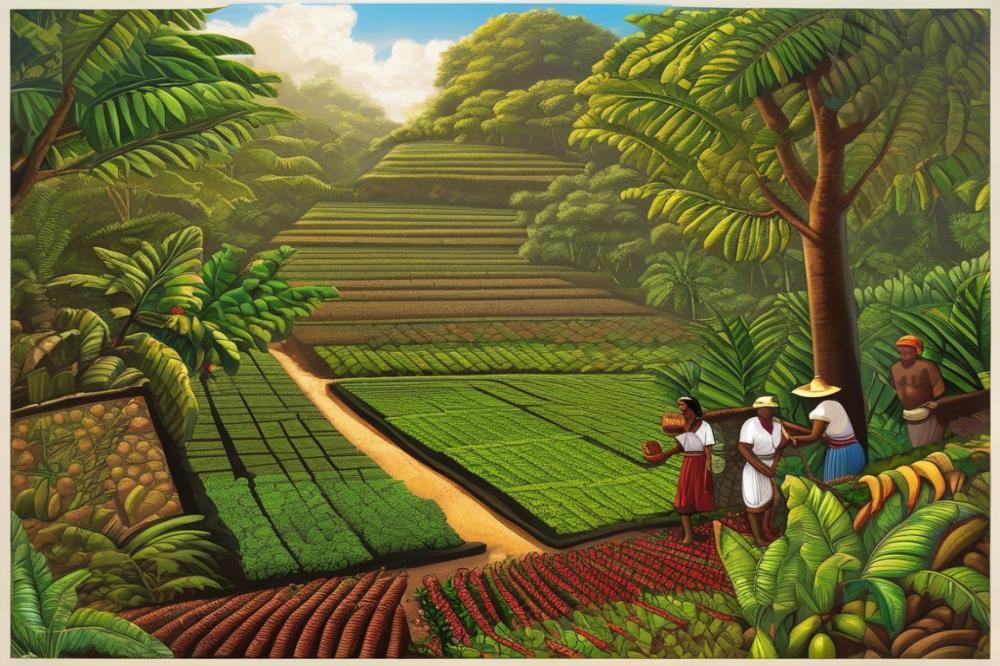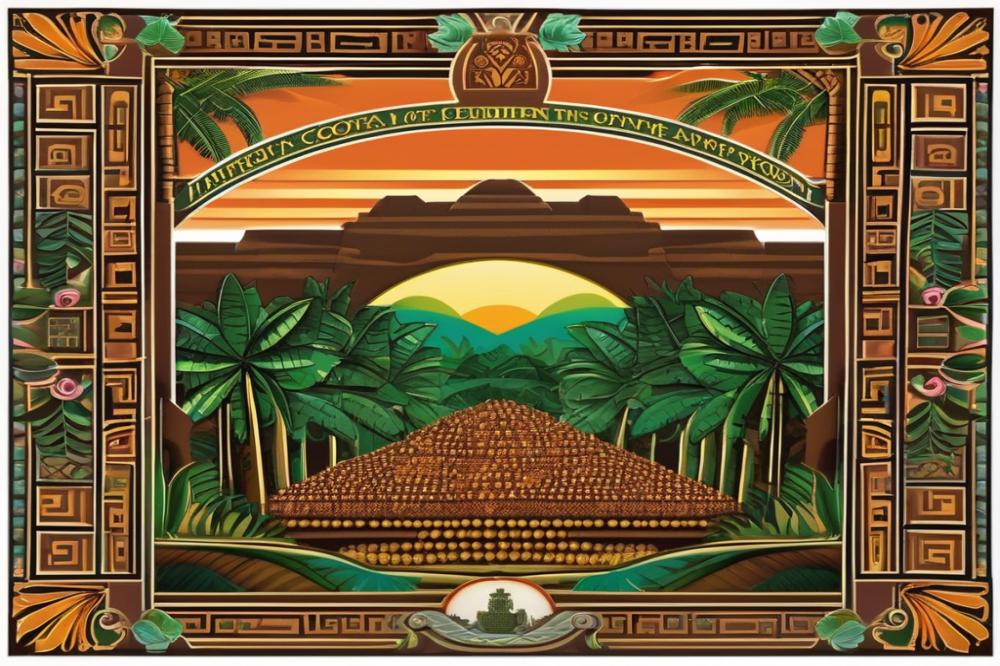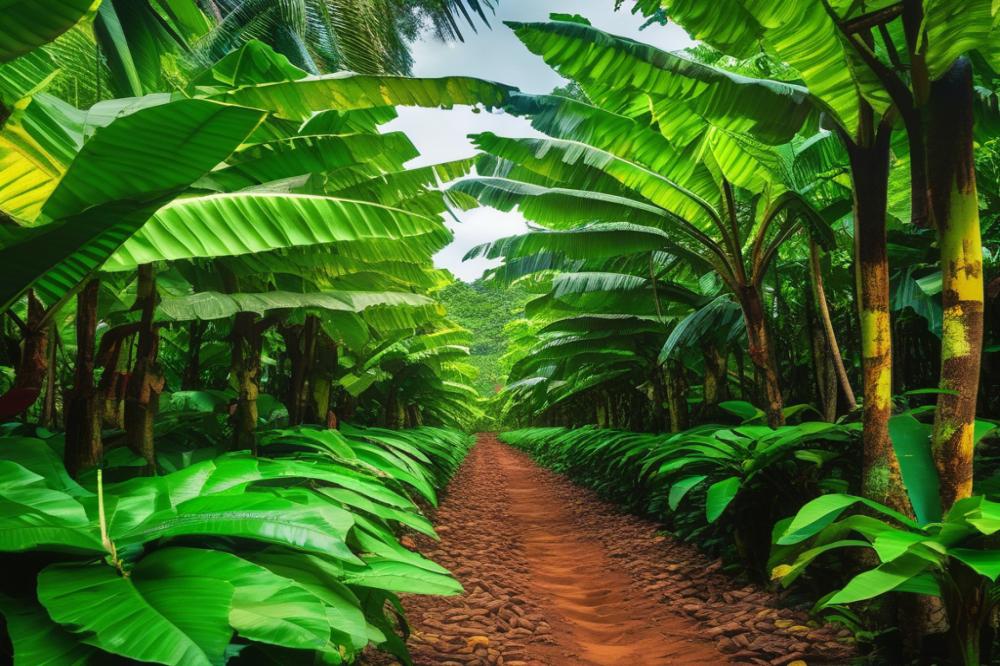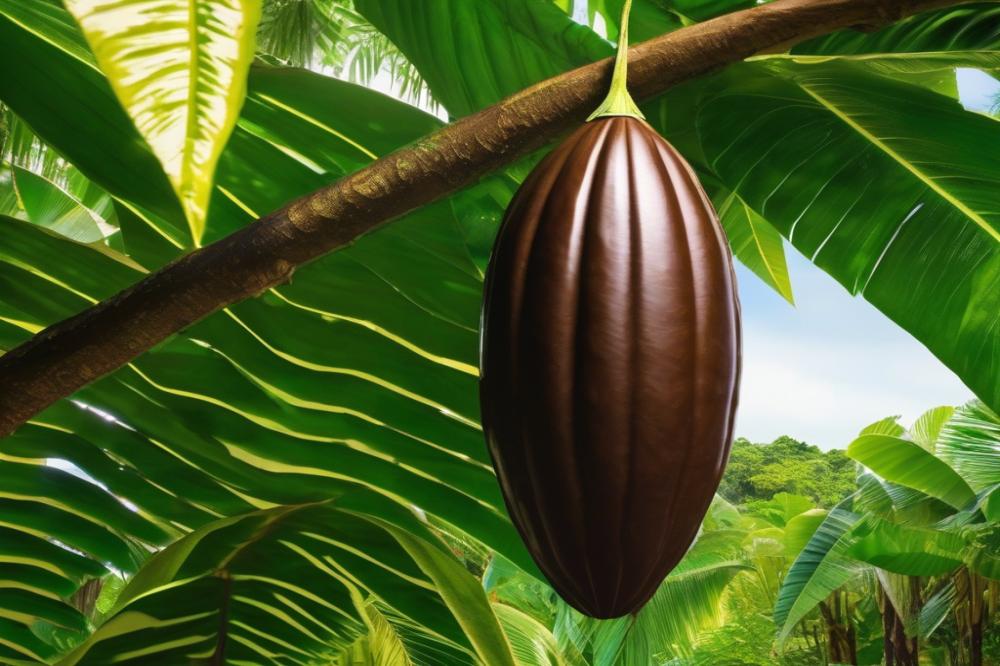The chocolatebix.com/fair-trade-cocoa-supporting-farmers-and-ethical-practices”>history of chocolatebix.com/cocoa-in-baking-tips-for-perfect-desserts”>Cocoa: A Sweet Story of Ancient Civilizations
Cocoa has played a compelling role in the history of humanity, weaving its narrative through Ancient Civilizations and modern delights. Understanding its significance goes beyond just a sweet treat we enjoy today. The story begins thousands of years ago in Mesoamerica, where indigenous peoples first cultivated cacao beans.
The Mayans and the Aztecs were among the first to elevate cacao into a cultural icon. They did not merely see it as a food item; it held deep religious and social importance. Both civilizations utilized cacao beans in rituals and as currency, showcasing its value in trade and daily life. This cultural significance highlights how much more cacao was than just agriculture; it was intertwined with economics, status, and spirituality.
Fast forward to the present day, and we see a world enamored with chocolate. The transformation from bitter beverages of the past to the sweet confections we adore today is remarkable. However, the roots of this beloved treat lie firmly in the practices of these ancient people. The evolution of chocolate reflects not only technological advancements but also the enduring legacy of those early civilizations that shaped how we experience cocoa today.
The Origins of Cocoa in Mesoamerica

Historical Background of Cocoa Cultivation
Cacao has a rich history that stretches back thousands of years in Mesoamerica. Archaeologists believe this crop was first cultivated by the Olmecs around 1500 BC. They valued it not just for its flavor but for its symbolic importance. The Mayans and later the Aztecs embraced cacao as a vital part of their cultures. Farmers became experts, learning to grow and harvest cacao beans with skill. The harsh environments of rainforests presented challenges, yet people adapted.
The Role of Cacao Beans in Mesoamerican Agriculture
In Mesoamerican agriculture, cacao beans were much more than a food source. They became an essential commodity for trade. Farmers often exchanged cacao beans for other goods. This trade helped build connections between different societies. Cacao was not limited to just agricultural markets. Its uses extended to various aspects of life, including rituals and ceremonies.
The Significance of Cocoa Among the Mayans
Among the Mayans, cacao held immense cultural significance. It featured prominently in religious rituals and was believed to be a gift from the gods. They prepared drinks from cacao, often flavored with spices. These beverages were reserved for the elite classes. In their society, cacao beans were even used as currency. A single bean could buy a tamale, while large quantities might be exchanged for a rabbit. Such practices illustrate cacao’s status as a symbol of wealth and power. The Mayans clearly understood the depth of significance of cacao, which went beyond mere taste.
Cocoa and the Mayans

The Mayans had a deep connection to cacao, which played a significant role in their daily lives. This ancient civilization is known for its advanced understanding of agriculture, and they learned to cultivate cacao trees in the lush Mesoamerican environment. Not only did they grow cacao for consumption, but they also valued the beans for their cultural significance. Often, they traded these precious beans, serving as an important currency at times.
Rituals and ceremonies centered around chocolate were vital to Mayan culture. Cacao was considered a gift from the gods, symbolizing life and fertility. During important events, such as weddings or religious celebrations, it was common for the Mayans to prepare special drinks made from cacao. These drinks were more than just a treat; they were an essential part of their spiritual practices.
Use of Cacao in Rituals and Ceremonies
Cacao often appeared in various rituals, marking significant moments in a person’s life. For instance, during a wedding ceremony, a chocolate drink might be shared to symbolize unity and love. In addition, cacao was sometimes used to honor the gods or ask for blessings. The Mayans believed that indulging in this drink could connect them to the divine.
The Preparation of Traditional Mayan Chocolate Drinks
Creating traditional Mayan chocolate drinks was an intricate process. First, the cacao beans were harvested, roasted, and then ground into a paste. Water was added along with spices, such as chili or vanilla, to create a rich and flavorful beverage. This concoction was often served frothy, which was considered a sign of quality. Drinking chocolate was not sweetened, unlike what many of us enjoy today, as sugar was not yet introduced to the region.
In summary, the Mayans celebrated cacao in numerous ways. Their practices surrounding this bean were both agricultural and spiritual. From trade to rituals, cacao played a vital role in their society. Today, we can appreciate the rich history of chocolate that traces back to these ancient civilizations.
Cocoa and the Aztecs

The Aztec civilization had a deep and rich relationship with cacao. This ancient culture thrived in what is now central Mexico. Cacao beans held great value in their society. In fact, they were often used as currency. One could buy various goods or even pay taxes with these beans. This unique aspect of trade made cacao an essential part of their economy.
Aside from trade, the Aztecs also cherished cacao for its cultural significance. They made a frothy drink that combined the cacao with spices, honey, and sometimes chili peppers. This drink was not only enjoyed by the elite but also played a vital role in important rituals. It symbolized wealth and power. In ceremonies, chocolate was offered to the gods, highlighting its importance in religious practices.
Historically, the Aztecs inherited the tradition of cacao use from the Mayans. Evidence shows that the Mayans also revered cacao, but the Aztecs took it a step further. They associated the cacao tree with various deities and saw it as a divine gift. Rituals even involved the use of cacao beans in marriage ceremonies. This underscores their belief in the bean’s power and potential.
Agriculture played a crucial role in the production of cacao. The Aztecs cultivated cacao trees in plantations, ensuring a steady supply. This cultivation was labor-intensive and required knowledge of the land. The success of agriculture directly influenced their society’s prosperity. Without cacao, aspects of daily life and trade would have changed dramatically.
The legacy of the Aztecs continues today. Chocolate, as we know it, has roots in their practices and traditions. Understanding the past reveals how a simple bean evolved into a global sensation. Mesoamerica was not just a place of ancient civilizations; it was a cradle of innovation and cultural depth surrounding cacao.
Cocoa Trade and Its Spread
The expansion of cocoa trade beyond Mesoamerica marked a significant shift in its historical journey. Originally cherished by the Mayans and later the Aztecs, cacao beans were not just food. They held immense cultural significance, infused in various rituals and ceremonies. As these ancient civilizations began trading cacao, they opened a pathway for the movement of this precious commodity.
During the Age of Exploration, European encounters with cocoa fundamentally changed its trajectory. When explorers returned home with cacao beans, they ignited curiosity and demand. Initially, the drink was bitter, served in its native form, but over time, sugar and other flavors were added. This adaptation transformed cacao into what we now celebrate as chocolate. The wealthy elite in Europe fell in love with this new delicacy, establishing a distinct class of chocolate enthusiasts.
The impact of chocolate on global trade and agriculture cannot be overstated. As demand surged, colonizers sought to cultivate cacao in various tropical regions. Plantations emerged across the Caribbean and eventually in parts of Africa. This expansion led to significant changes in local economies and agricultural practices. Cacao cultivation thrived, often at the cost of indigenous laborers and their communities. While chocolate became a symbol of luxury and pleasure, it could not escape the complex and often dark history surrounding its production.
The trade routes developed for chocolate further connected continents and cultures. Merchants capitalized on the growing obsession, fueling a market that spanned oceans. This exchange was not merely about goods; it intertwined cultural influences and traditions. Chocolate’s journey reflects broader themes of globalization and exchange throughout history.
Cultural Significance and Modern Influence
The ancient civilizations of Mesoamerica brought a rich cultural tapestry woven around the cacao bean. The Mayans viewed these beans as divine, using them in rituals and celebrations. They believed that the gods had bestowed cacao upon them, making it a sacred drink. Similarly, the Aztecs embraced this belief, integrating it deeply into their society. For them, chocolate was not just a treat; it was an essential part of life.
Trade played a crucial role in the history of chocolate. These ancient groups exchanged cacao beans for goods and services, highlighting their high value. Cacao was more than currency; it served as a symbol of wealth. In this way, chocolate became a common thread in social interactions and economic systems. The beans reflected status in both Mayan and Aztec societies, a gift for leaders and dignitaries.
Over centuries, the transformation of chocolate from a bitter drink to the sweet form we recognize today has been remarkable. The journey began after the Spanish brought cacao to Europe in the 16th century. With the addition of sugar and spices, the drink underwent a dramatic change in flavor and presentation. This marked the beginning of chocolate’s rise in popularity among the elite in Europe.
Modern culture still celebrates the legacy of cacao in various forms. Chocolate festivals and gourmet shops pay homage to its rich heritage. Global consumption continues to thrive. Today, people enjoy chocolate as a treat and for emotional connections, such as during holidays or special occasions. This deep-rooted appreciation highlights how cacao has influenced not only history but also current cultural practices.
Final Thoughts on Cocoa’s Journey
The story of cocoa is one that bridges ancient times to our modern world. It began with the Olmecs, who first cultivated cacao beans. This journey continued through the Mayans and Aztecs, who transformed beans into a ceremonial drink. Each civilization contributed unique practices that shaped its use and importance. For many, cocoa was not just food, but part of rituals and trade. These ancient cultures valued it deeply, often associating it with gods and royalty.
Today’s chocolate culture clearly reflects these historical roots. From luxurious bars to creamy desserts, its evolution is a testament to human creativity and effort. Modern chocolate makers still rely on traditional techniques while exploring new flavors and forms. The respect for cacao’s ancient lineage helps to preserve its rich story. This connection to the past makes every bite meaningful.
People remain fascinated by cocoa’s journey through time. It is more than just a sweet treat; it’s an important element of human history. Every chocolate product carries with it whispers of the past, connecting us to the ancient civilizations that revered this bean. As we savor our chocolate, we honor the legacy of those who came before us.



